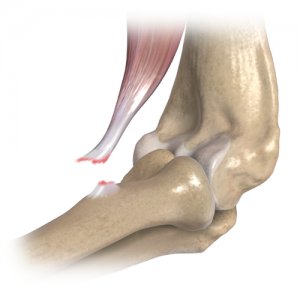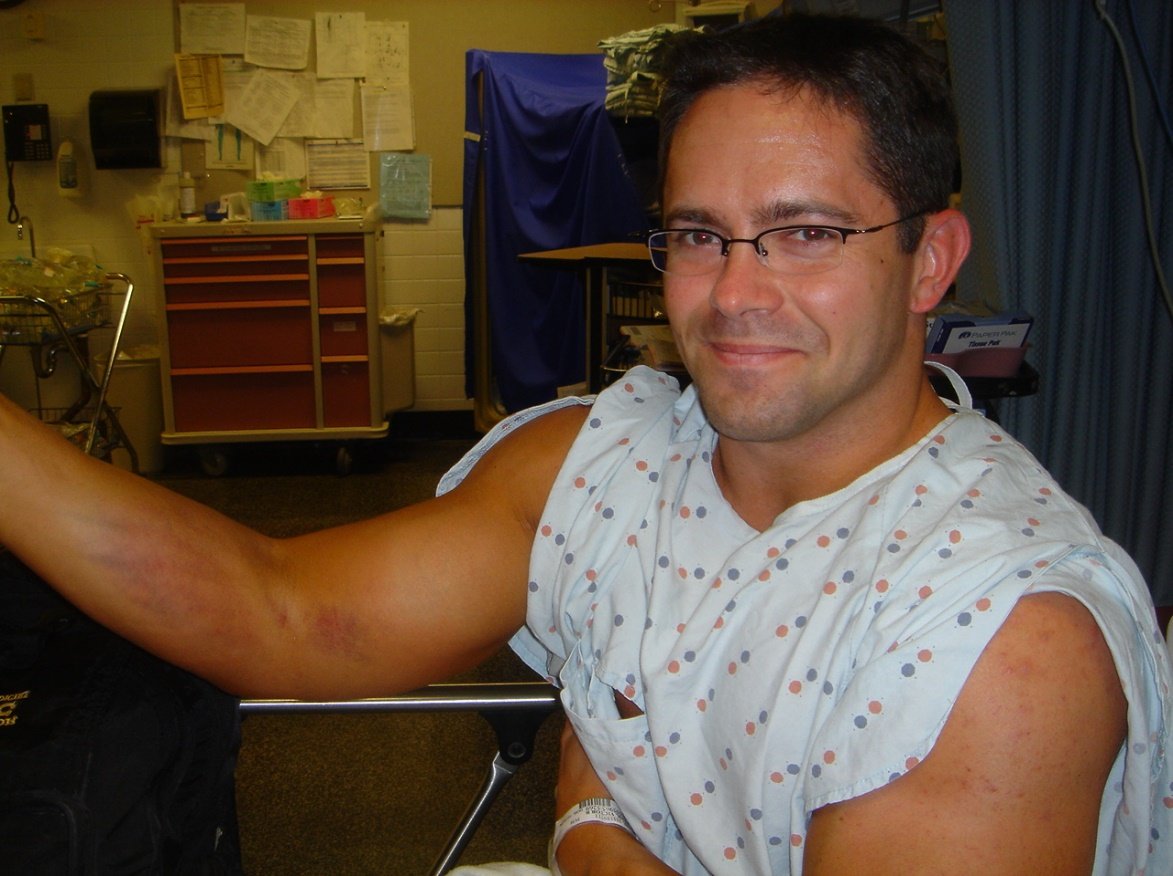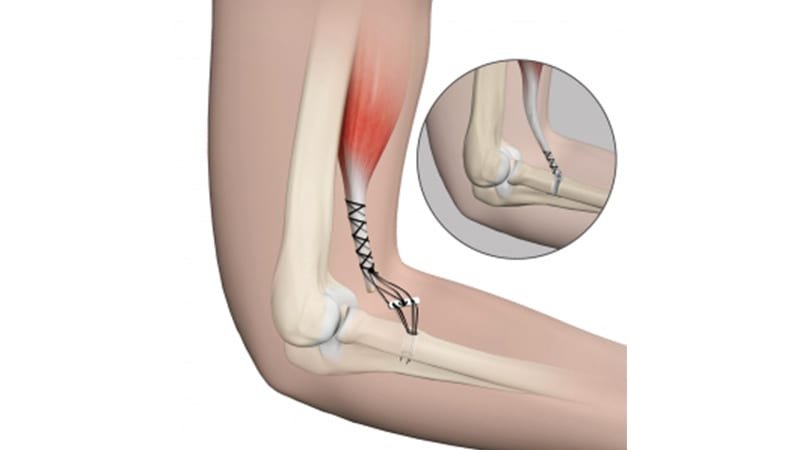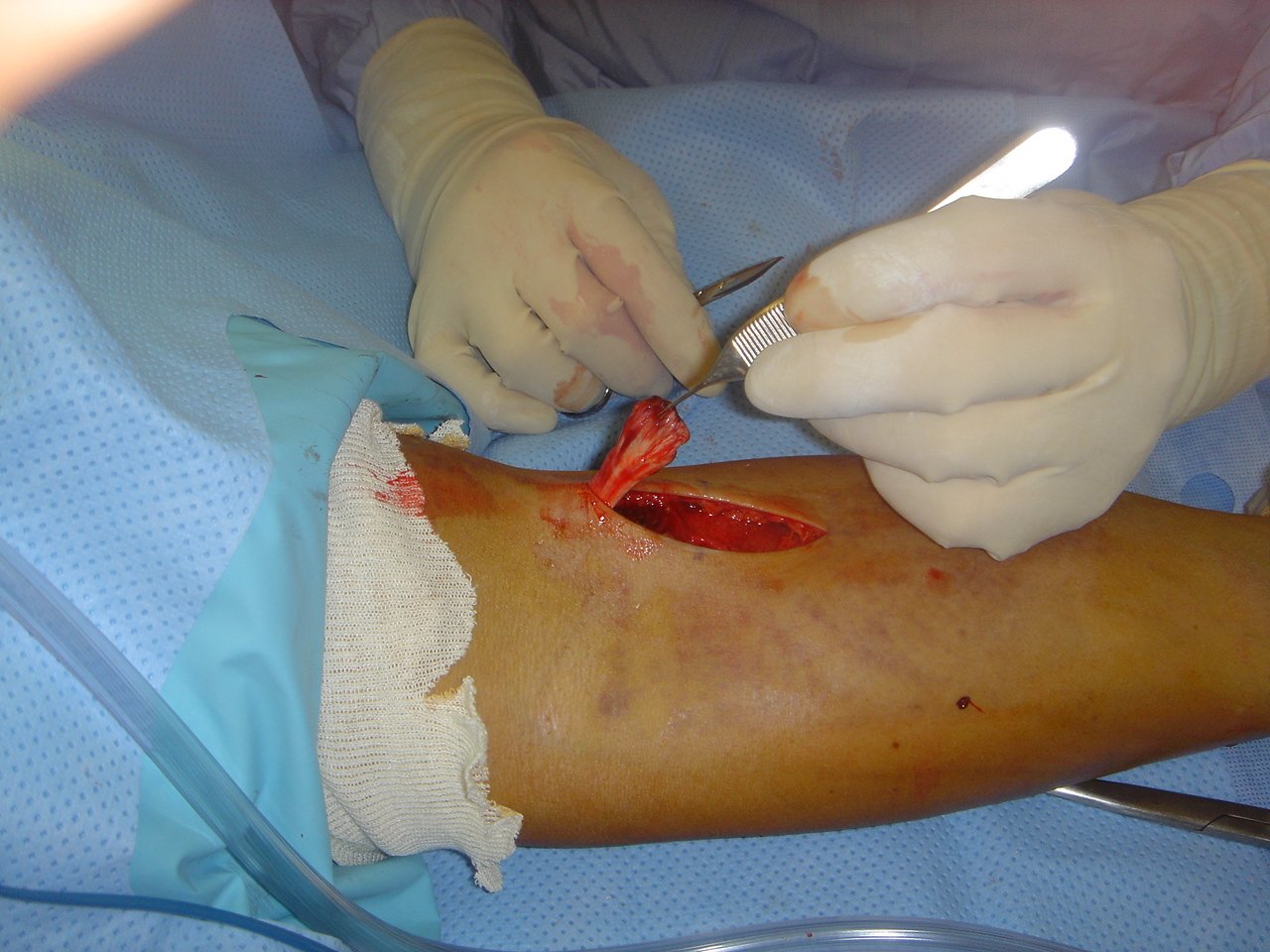 The biceps muscle is a major player in elbow flexion and forearm supination (turning your palm upwards). When the tendon connecting the lower end of the biceps to the elbow ruptures, it can significantly impact your arm strength and function. This condition, known as a distal biceps rupture, requires prompt medical attention to ensure optimal healing and regain full use of your arm.
The biceps muscle is a major player in elbow flexion and forearm supination (turning your palm upwards). When the tendon connecting the lower end of the biceps to the elbow ruptures, it can significantly impact your arm strength and function. This condition, known as a distal biceps rupture, requires prompt medical attention to ensure optimal healing and regain full use of your arm.
At Prisk Orthopaedics and Wellness, our team of experienced professionals is dedicated to providing comprehensive care for all your musculoskeletal needs. This blog delves into distal biceps ruptures, their signs and symptoms, the evaluation process, treatment options, and the expected recovery timeline.
Signs and Symptoms of a Distal Biceps Rupture
A sudden and forceful contraction of the biceps muscle is the most common cause of a distal biceps rupture. This can happen while lifting a heavy object, falling on an outstretched arm, or during weightlifting exercises like bicep preacher curls and deadlifts. The telltale signs of a distal biceps rupture include:
- Pop or Snap: You might hear or feel a popping or snapping sensation in your elbow at the time of injury.
- Pain: Immediate and intense pain around the elbow joint is a common symptom. However, the pain may subside somewhat after the initial tear.
- Swelling and Bruising: Significant swelling and bruising around the elbow and forearm develop rapidly after the injury.
- Muscle Bunching: The biceps muscle belly may bunch up near the shoulder, creating a visible bulge due to the detached tendon.
- Weakness: You will experience weakness in bending your elbow (flexion) and rotating your forearm (supination).
- Gap at the Elbow: In some cases, a visible gap may be present in the front of the elbow where the tendon used to be attached.

Dr. Prisk had a rupture of his bicep doing gymnastics. This photo depicts typical bruising.
Medical Evaluation of a Distal Biceps Rupture
If you suspect a distal biceps rupture, seeking immediate medical attention is crucial. Here's what you can expect during your evaluation at Prisk Orthopaedics and Wellness:
- Detailed Medical History: Dr. Prisk will inquire about your symptoms, activities leading up to the injury, and any past medical conditions.
- Physical Examination: Dr. Prisk will carefully examine your elbow for swelling, bruising, and tenderness. They will also assess your range of motion in elbow flexion and supination, and check for the characteristic biceps 'pop' test.
- Imaging Tests: X-rays are typically taken to rule out any bone fractures or lesions. Dr. Prisk will perform an ultrasound in the office to confirm the diagnosis. In some cases, an MRI scan may be recommended to confirm the location and extent of the tendon tear.
Treatment Options for Distal Biceps Ruptures
The treatment approach for a distal biceps rupture depends on various factors, including the severity of the tear, your age and activity level, and your dominant arm. Our team at Prisk Orthopaedics and Wellness will discuss both nonoperative and operative treatment options with you:
- Nonoperative Treatment: For partial tears or in less active individuals, nonoperative treatment may be sufficient. This typically involves immobilization with a sling for comfort, followed by physical therapy to regain strength, flexibility, and range of motion. Medication may also be prescribed.
- Operative Treatment: In younger, active individuals, complete tears, or those with significant functional limitations, surgery may be recommended for optimal recovery. The surgery involves reattaching the torn tendon to the bone using anchors and sutures. A single incision anterior approach is Dr. Prisk’s preferred method. A suture button and anchors are typically used in combination to allow early motion and return to function.


This is the single incision approach and Dr. Prisk’s biceps rupture.
Recovery from a Distal Biceps Rupture
- Pain Management: Techniques like ice therapy and electrical stimulation can help reduce pain and inflammation.
- Restoring Range of Motion: Gradual exercises will help regain full flexion and supination of the elbow joint.
- Strengthening Exercises: Targeted exercises progressively strengthen the biceps muscle and surrounding structures for optimal function.
The recovery timeline for a distal biceps rupture varies depending on the severity of the tear, treatment approach, and your individual healing rate. Generally, nonoperative treatment takes 6 to 8 weeks for recovery, while surgery can extend recovery to 3 to 4 months.
Prisk Orthopaedics and Wellness: Your Partner in Recovery
At Prisk Orthopaedics and Wellness, we understand the impact a distal biceps rupture can have on your daily activities. Our team of experienced orthopedic surgeons and physical therapists works collaboratively to develop a personalized treatment plan to help you achieve full recovery and regain strength and function in your arm.
If you experience any signs or symptoms suggestive of a distal biceps rupture, don't hesitate to contact Prisk Orthopaedics and Wellness at 412-525-7692.
